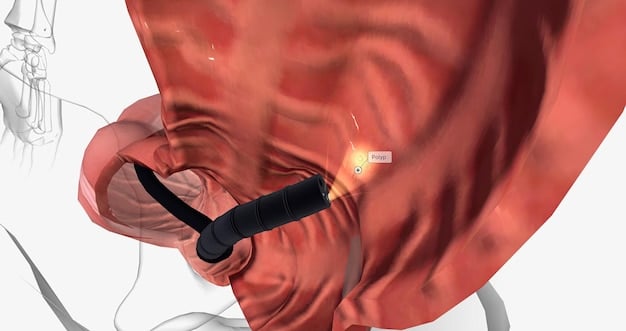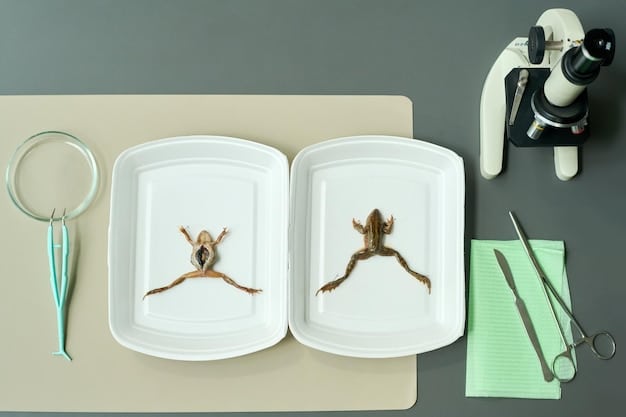Understanding Penile Implants: Types, Benefits, and Considerations

Understanding the different types of penile implants involves exploring inflatable and malleable options, each designed to restore erectile function with varying degrees of firmness and ease of use, ultimately improving the quality of life for men experiencing erectile dysfunction.
Understanding the different types of penile implants: A comprehensive overview can empower men facing erectile dysfunction to make informed decisions about their treatment options. This guide will help you understand the various types, how they work, and what to consider before choosing an implant.
What are penile implants?
Penile implants are medical devices surgically implanted inside the penis to allow men with erectile dysfunction (ED) to achieve an erection. They are typically considered after other treatments for ED have failed.
How penile implants work
Penile implants work by providing the penis with the rigidity needed for intercourse. Unlike medications that enhance blood flow, implants offer a mechanical solution, making them suitable for men with severe ED or those who cannot tolerate other treatments.
The surgery involves placing inflatable or malleable rods inside the penis. The choice of implant depends on individual preferences, medical conditions, and surgeon recommendations.

Types of penile implants
There are primarily two types of penile implants: inflatable and malleable (also known as non-inflatable). Each type has its own advantages and disadvantages, and the best choice depends on individual needs and preferences.
Inflatable penile implants
Inflatable implants consist of inflatable cylinders placed in the penis, a reservoir filled with fluid implanted in the abdomen, and a pump placed in the scrotum. To achieve an erection, the pump is squeezed, transferring fluid from the reservoir to the cylinders.
These implants provide a more natural-looking and feeling erection, as well as flaccidity when deflated. They do, however, have more parts, which increases the risk of mechanical failure.
Malleable penile implants
Malleable implants consist of two flexible rods that are inserted into the penis. The user manually adjusts the position of the penis to achieve an erection. These implants are simpler in design and have fewer parts than inflatable implants, making them less prone to mechanical failure.
However, the penis is always in a semi-rigid state, which some men may find inconvenient or unnatural.
Inflatable vs. Malleable: Key differences
The choice between inflatable and malleable penile implants depends on several factors, including the user’s lifestyle, manual dexterity, and cosmetic concerns.
- Erection quality: Inflatable implants provide a more natural-looking and feeling erection, while malleable implants result in a permanently firm penis.
- Concealment: Inflatable implants can be completely deflated for better concealment, while malleable implants maintain a degree of rigidity.
- Complexity: Inflatable implants are more complex and have a higher risk of mechanical failure, while malleable implants are simpler and more durable.
- Ease of use: Inflatable implants require manual pumping, which may be difficult for some men, while malleable implants are manually positioned.
Who is a good candidate for a penile implant?
Penile implants are typically considered for men who have severe erectile dysfunction that has not responded to other treatments, such as medications, injections, or vacuum devices.
Medical conditions that may indicate an implant
Certain medical conditions, such as diabetes, Peyronie’s disease, prostate cancer treatment, and spinal cord injuries, can cause ED that may be effectively treated with a penile implant.
Men who have realistic expectations, are willing to undergo surgery, and understand the potential risks and benefits are generally good candidates.
Psychological considerations
It’s important for men to have a stable psychological state before considering a penile implant. Addressing any underlying emotional or relationship issues can contribute to a more successful outcome.
Consultation with a mental health professional may be recommended for men with anxiety, depression, or other psychological concerns.
The penile implant surgery process
The surgical procedure for penile implant placement typically takes one to two hours and is usually performed on an outpatient basis. The steps involved include anesthesia, incision, cylinder placement, reservoir placement (for inflatable implants), and pump placement (for inflatable implants).

Recovery and aftercare
After surgery, men can expect some pain and swelling, which can be managed with medication. It is important to follow the surgeon’s instructions for wound care, activity restrictions, and follow-up appointments.
- Avoid strenuous activity for several weeks.
- Attend all follow-up appointments.
- Report any signs of infection to your surgeon immediately.
Potential risks and complications
As with any surgical procedure, there are potential risks and complications associated with penile implant surgery. These may include infection, bleeding, erosion, mechanical failure, and pain.
- Infection is a risk with any surgery, but can usually be treated with antibiotics.
- Mechanical failure is more common with inflatable implants due to their complexity.
- Erosion occurs when the implant wears through the skin, requiring additional surgery.
Discussing these risks with your surgeon before surgery is essential to making an informed decision.
Living with a penile implant
Most men are satisfied with their penile implant and report an improved quality of life, including enhanced sexual function and self-esteem.
Sexual function and satisfaction
Penile implants allow men to have intercourse, but they do not necessarily restore sensation or libido. Some men may require additional treatments or counseling to address these issues.
Communication with your partner is important to ensure mutual satisfaction.
Long-term care and maintenance
Penile implants are designed to last for many years, but they may eventually require replacement or repair. Regular follow-up with your surgeon is important to monitor the implant’s function and address any potential problems.
Malleable implants generally require less maintenance than inflatable implants.
| Key Point | Brief Description |
|---|---|
| ⚙️ Types of Implants | Inflatable and malleable options available. |
| 👨⚕️ Candidacy | Considered when other ED treatments fail. |
| ⚠️ Risks | Includes infection, mechanical failure, and erosion. |
| ❤️ Satisfaction | Most men report improved quality of life. |
Frequently Asked Questions
▼
The success rate is generally high, with most men reporting satisfaction with the outcome. However, individual results may vary depending on factors such as medical condition and implant type.
▼
Penile implants are designed to be durable, but their lifespan can vary. On average, they can last 10-15 years or longer. Regular follow-up with your surgeon is important for maintenance.
▼
Penile implant surgery is generally not reversible, as the procedure alters the natural anatomy of the penis. Explanting the implant may lead to scarring and difficulty with other ED treatments.
▼
Penile implants primarily address erectile dysfunction and do not directly affect the ability to orgasm or ejaculate. However, some men may experience changes in sensation or satisfaction.
▼
The cost can vary depending on the type of implant, surgeon fees, and facility charges. Insurance coverage may be available, but it’s important to check with your provider and discuss costs with your surgeon’s office.
Conclusion
Understanding the different types of penile implants and the factors that influence their selection is crucial for men seeking a long-term solution for erectile dysfunction. Consulting with a qualified urologist and carefully considering your individual needs and preferences will help ensure a successful outcome and improved quality of life.





